
Emily Sigman, Master of Forestry and Master of Global Affairs
I traveled to Oaxaca, Mexico over the 2019-2020 winter recess to support my research on the global cocoa supply chain, Oaxaca is a cultural center of cacao consumption and one of the only places in the world where chocolate is regularly and ritually consumed according to a variety of historic recipes, many of which are pre-Columbian.
Theobroma cacao is native to Mesoamerica, where it played a central role in several major empires dating back to at least the Olmec. Yet ironically, today in the region, the chocolate prepared and consumed—much of it by indigenous groups—is actually imported from West Africa. Spanish and Portuguese colonists—in particular clergy—were instrumental in bringing a taste for chocolate to Europe, where it evolved as a staple of the both European and American diet. To satisfy the demand for chocolate, colonists also began planting cacao throughout various colonies in West Africa. Today, the majority of the world’s chocolate is sourced not from Latin America—where it is culturally and biogeographically endemic—but instead from West Africa, where the supply chain is ridden with labor rights abuses, environmental destruction, and untenable inequality.
My field visit in Oaxaca was tremendously productive, complementing my research with producers in West Africa and chocolatiers in Europe. Activities and highlights included
- Interviews with 5 gourmet chocolate entrepreneurs
- Visits to two traditional chocolate grinding facilities – Mayordomo and La Soledad
- Participatory observation in a traditional chocolate-making workshop
- Short interviews with 11 cacao marketeers
- Attendance at the annual Posada de Chocolate – 2 days of panels, programming, and performance dedicated to the region’s rich chocolate history, plus gathering of dozens of local chocolate vendors.
- Visit to San Andres Huayapam – pueblo located an arduous bike ride into the mountains surrounding Oaxaca City, known as the Tierra del Tejate and home to the annual Feria del Tejate (tejate is an indigenous drink made from cacao, maize, and a tropical flower called Rosita de cacao, L. Quararibea funebris).
- Conducted oral history interviews with mother and daughter tejate makers
- Visited traditional tejate sites and monuments
- Located populations of endangered Quararibea funebris trees in local homegardens
- Visited local permaculture site and ecovillage
I came away from the visit with a number of important insights:
- The culture around chocolate consumption is as significant as ever in Oaxaca, particularly as young entrepreneurs seek to create socially-conscious startups promoting sustainable cultivation of local cacao with fair returns to indigenous communities
- There is a strong push amongst contemporary chocolate entrepreneurs to source as locally as possible, and substantial efforts are being made to cultivate cacao in some of the coastal and humid areas of Oaxaca State.
- Cultivating cacao sustainably remains a subject in need of extensive research – current small scale projects produce low quality chocolate, and large scale projects are highly susceptible to disease.
- ‘traditional’ forest garden approaches to ‘sustainable’ cultivation invariably involve polycultures of non-native plants with high market value
- There is much excitement around the potential to cultivate a different species of T. bicolor (Pataxte) for chocolate consumption, though it historically has never been used as such (it has been traditionally consumed in other ways).
- Water shortages severely limit cacao production and will continue to get worse.
- There is much opacity surrounding cacao sourcing among marketeers and consumers , many of whom purchase cacao in bulk from intermediaries and do not know the origin of the cacao
- Much of this cacao appears to be bulk imports from large multinational corporation, signaling origins in West Africa and possibly Southeast Asia.
- A better understanding of the preparation and inputs of several key pre-Columbian cacao concoctions, including tejate, champurrasco, espuma de cacao, and mole.
- In particular, an understanding of interconnection between environmental degradation, public health , cultural identity and tejate:
- Huayapam is known as the ‘Tierra del Tejate’ because it is one of the only places where Q. funebris is still grown (Despite the fact that it is not easily grown in this region – the only populations that exist are cultivated in homegardens, not wild).
- The trees are struggling to survive with climate change, and may be getting parasitized by a kind of beetle. Most of the trees that are currently being harvested were planted at least 2-3 generations ago.
- Recently the municipality undertook mandatory mosquito fumigation in the pueblo after a severe outbreak of Dengue fever. The fumigation had the unintended consequences of killing or wounding many of the Q. funebris trees.
- In particular, an understanding of interconnection between environmental degradation, public health , cultural identity and tejate:
- Connections made at the Posada del Chocolate will facilitate followup interviews and a return visit to be conducted Dec/Jan 2020-21
- Future visits to include more time in Huayapam meeting with additional tejate makers and surveying Q. funebris populations
- Visits to production sites of cacao in Tamazulapam, Veracruz, and Soconusco.
- Additional and repeat interviews
- Improved surveying of marketeers based on initial data

Traditional preparation of Tejate in San Andres Huayapam

A mature Quararibea funebris (Rosita de cacao) tree in a homegarden in Huayapam.
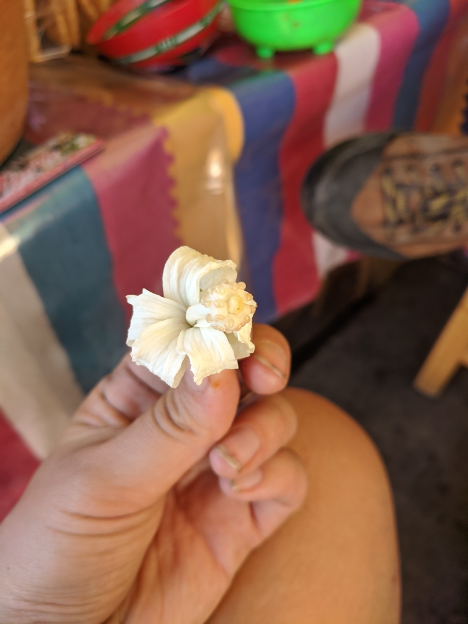
The key ingredient – flowers from Quararibea funebris (rosita de cacao) for use in preparing tejate.

Town square – San Andres Huayapam. Featuring a fountain with a stone woman
preparing tejate.
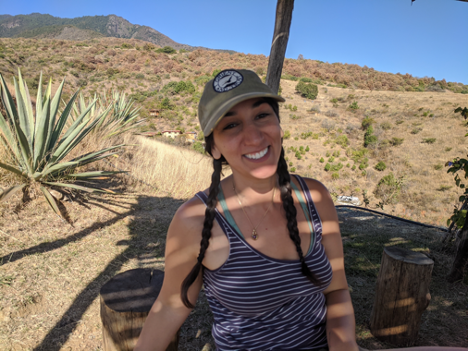
Visiting the Huayapam Permaculture Site.
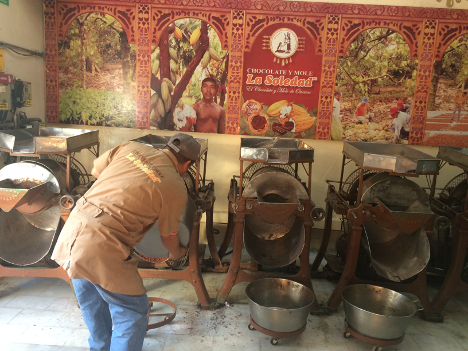
Grinding operations at the historic La Soledad facility in Oaxaca City.
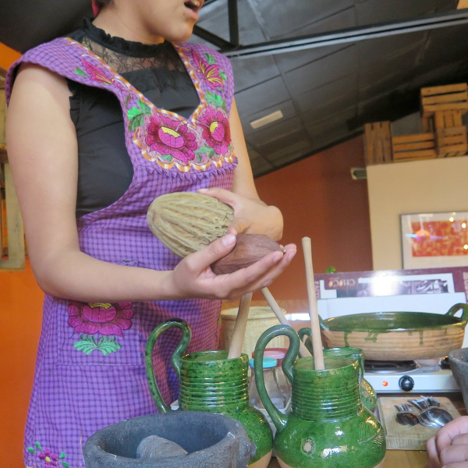
Explaining different varieties of cacao at a chocolate workshop in Oaxaca City.
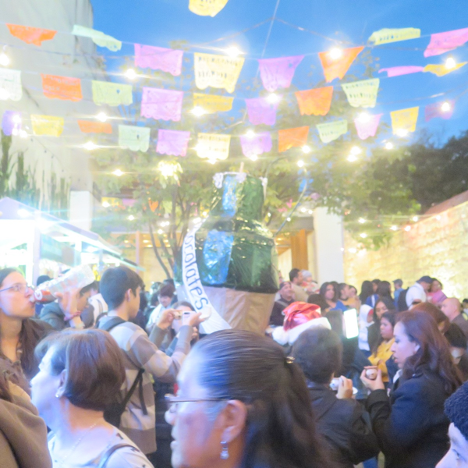
Celebrating chocolate at the Posada Del Chocolate, hosted annually by the San Pedro Cultural Heritage Center.
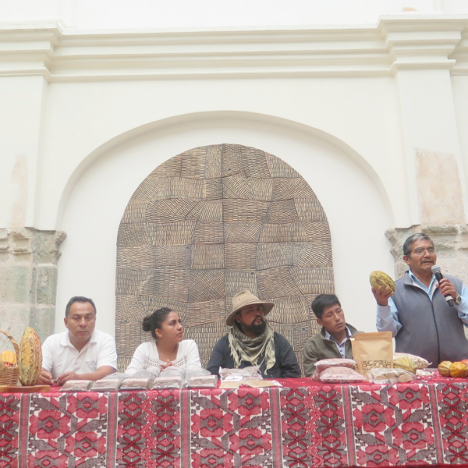
Panel discussion with Mexican cacao producers at the Posada del Chocolate.

Preparation of Espuma de Cacao by an artisan at the Posada del Chocolate
